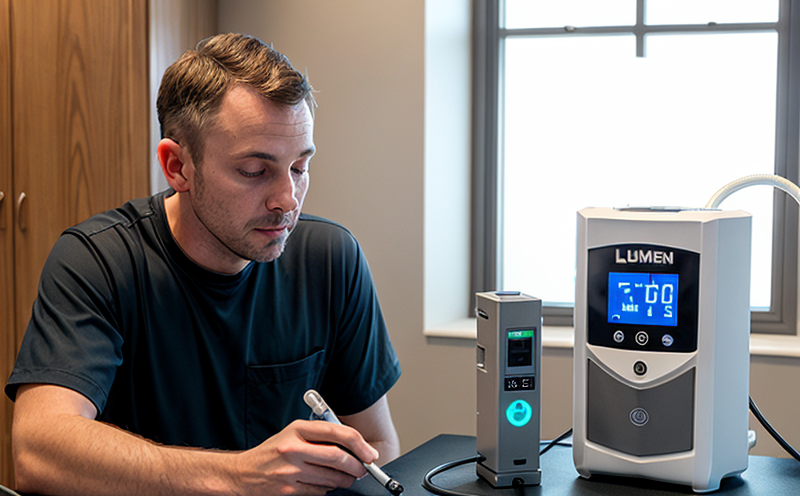CIE 84 Measurement of Luminance Lifetime Testing of Lighting Installations
Understanding and ensuring long-term performance in lighting installations is critical for both manufacturers and end-users. The CIE 84 standard provides a robust framework to measure the luminance maintenance over time, which directly impacts energy efficiency, comfort, and sustainability.
The CIE 84 Measurement of Luminance Lifetime Testing involves subjecting lighting fixtures to accelerated aging conditions that simulate real-world usage environments. This process helps in identifying any potential degradation in luminous flux output (lumen maintenance) over the expected lifetime of a product or installation. Accurate measurement and analysis are essential for verifying compliance with international standards such as ISO, IEC, and EN.
Before testing begins, specimens must be carefully prepared according to predefined protocols outlined in CIE 84. This includes cleaning the fixtures thoroughly and ensuring they are stable on a test stand. The test setup typically comprises a controlled environment chamber where temperature, humidity, and other parameters can be precisely regulated.
The testing procedure involves exposing the fixtures to various stressors that mimic operational conditions like high temperatures, rapid thermal cycling, or UV radiation exposure. Specimens are monitored continuously during this period using advanced photometric measuring instruments capable of capturing detailed luminance data at regular intervals.
| Stressor | Description |
|---|---|
| High Temperature Cycling | Simulates prolonged exposure to elevated ambient temperatures. |
| Rapid Thermal Cycling | Replicates fluctuating temperature conditions encountered in outdoor applications. |
| UV Radiation Exposure | Mimics the effects of solar radiation on materials over extended periods. |
Data collected throughout these tests are analyzed to determine how much lumen maintenance has been lost compared to initial readings. Compliance with specified criteria ensures that products meet quality standards and can be trusted for reliable performance in various settings.
Scope and Methodology
The scope of CIE 84 testing encompasses the evaluation of light sources within complete lighting installations. It focuses on assessing lumen maintenance, which refers to the preservation of a source’s initial luminous flux throughout its operational lifespan.
Methodologically speaking, this involves several key steps:
- Preparation of specimens
- Setting up the test environment
- Application of stressors
- Continuous monitoring and recording of data
- Data analysis and interpretation
At each stage, adherence to strict protocols ensures accurate results. For instance, specimens need to be prepared under controlled conditions before being exposed to stressors. The choice of these stressors depends on the intended use case but generally includes factors like temperature variations, humidity levels, and exposure to ultraviolet light.
Once the testing phase concludes, detailed reports are generated summarizing all findings. These documents include information about lumen maintenance percentage retained after specified durations as well as any deviations from expected behavior noted during the process.
Industry Applications
- Benchmarking product performance against industry benchmarks
- Evaluating compliance with regulatory requirements like CE marking or RoHS directives
- Supporting R&D efforts in developing more efficient and durable lighting solutions
- Aiding procurement teams in selecting high-quality suppliers
Competitive Advantage and Market Impact
Adopting CIE 84 measurement practices offers numerous competitive advantages. By demonstrating consistent lumen maintenance performance, companies can enhance their reputation among consumers who value reliability and longevity in products.
This testing method also supports sustainable development goals by promoting the use of resources more effectively. Manufacturers that invest in this kind of research gain a deeper understanding of material properties under extreme conditions, leading to innovations that reduce waste while improving overall efficiency.





